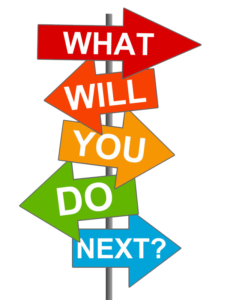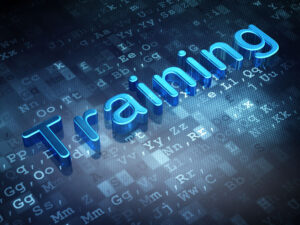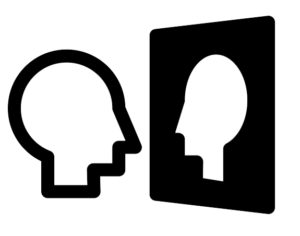The choices; what to do; where to begin
By Joseph Cervenak*
In October 2010, I wrote an article about Caribbean businesses and their potentials for a successful 2011. Included in that article was a to-do list, a challenge of critical issues leading minimally to survival or at best to market dominance. The to-do items, tag-lined ‘Eleven for Eleven,’ were presented as critically strategic goals and required serious examination. Goal achievement would bring success.
The ‘Eleven for Eleven’: 1 Cash flow, 2 Customer loyalty, 3 Inventory, 3 Technology, 4 Information Technology, 5 Cloud computing, 6 Risk, 7 Sustainable Energy and Green, 8 Strategy, 9 Supply Chain, 10 Training and Development and 11 Panama Canal 2014.
These elements essential for organizational growth were obvious areas for attention. They were logical, straightforward and widely perceived as solid management objectives for the times. Given resources and top-level commitment it was expected that implementation would satisfy the revenue and profitability goals of an organization’s growth plan.
How did companies fare with the Eleven?
A brief anecdotal survey suggested that several initiatives are considered complete and are present-day suitable. The Panama Canal expansion was a success; cash flow improved, customer loyalty programmes multiplied; and, to an extent, the supply chain, somewhat timidly, introduced new technologies to utilize data analysis as a key ingredient to target process changes.
Why not better results?
For some, the belief was that the scope and scale of the tasks were so enormous that nothing could be done at the local level. “What can I do?” was the near-apologetic rebuttal to the challenge to do something. Did leadership’s support come in the form of a polite nod to acknowledge the existence of the to-dos? Absent: a budget; charged responsibility and assignments; the classic excuses of too much organization; toxic internal politics; department ‘silos’; self-interest; territorial protection and lack of leadership may have had validity. Or, were reports and plans simply buried in the desktop pile of other to-do lists?
Fast-forward to the present, have we used the Covid pandemic with its horrors of death, hospitalization, confusion, misdirection, mandates of isolation and detachment and interpersonal isolation as a convenient excuse? Or, is it simply laziness coupled with a wish for an enigmatic ‘them’ to make it all better?
Due to an absence of buy-in or purposeful leadership, these issues, now accelerated, continue. Day after day after day, irreparable damage takes place. Do we see it? We note the accumulation of litter, notably in the form of plastics, cigarette butts and drink bottles. This becomes unsettling as we begin to see that the ecosystem and life quality inherent in the Caribbean world in its signature surf, sand and sun attraction as now challenged. Once pristine, the savvy traveller’s idyllic destination of the Caribbean is approaching its most critical times. We see this in places where we don’t want to look: the beach, the ocean and the sun. And, as we look, we become aware of the ambient air pollution we breath from use of fossil fuels and open burning of garbage and waste. Indeed, more than a tube of SPF 40 or an N95 mask will be needed.
We now need only to take the time to look and recognize the importance of the environmental threat to health and consider remedial options.
The choices?
Are we to do nothing, except to bunker down, isolate and enjoy what remains as we create a neo-microcosm that offers as its norm, stasis? Attributed to author and consultant Tom Peters, stasis is “… Latin for dead and buried.” There is always movement and movement creates change. Direct or implied, change is a constant and it always accelerates. In 1970, Alvin Toffler and Adelaide Farrell authored Future Shock. The book’s title broadly defined “a psychological state affected by an emergent acceleration of change.”
There can be no stasis. Everything moves faster. Speed becomes the critical differentiator (… think Amazon delivery).
Every Amazon order ships with a sense of urgency. There is no waiting. There is only movement and creation. There is no wait for a new normal. Jeff Bezos and his team continue to create. The headline creators, Elon Musk, Steve Jobs, Tony Hsieh, Larry Page, Sergey Brin amongst many, never hesitate. For them there can be no stasis. Brian O’Keefe, columnist for Fortune magazine posits: “There is no wait for the catchy alliterative ‘New Normal’ ” Perhaps it be best to erase the term from our vocabulary and apply our energies to the new world of 2022.
 Where to begin?
Where to begin?
Begin with the classic framework for self-examination and analysis to ‘know thyself.’ Use the classic S W O T programme, (Strengths. Weakness. Opportunities. Threats). Identify your internal strengths and weaknesses and identify the external opportunities and threats. The template for the S W O T process, with clear procedures, is readily available,. Upon completion, identify and harvest the low hanging fruit made apparent by the S W O T process.
The Eleven remain as to-dos, and, in light of new experiences, need to be examined and adjusted to meet current needs.
What to do?
For the present, a specifically targeted strategic roadmap is vital. The objective: to successfully combat the negatives as we know them; to improve the environment; within our capabilities; and, to differentiate our organization from others over the next three to five years. To this end, consider the following as action items, or Key Performance Indicators (KPIs).
Each must command a high priority within a port’s Strategic Plan. Each must have adequate resources; ongoing endorsement; and, active support from the Executive suite.
KPI Action Items:
- Climate Change, Global Ecosystem, Global Warming, Sustainable Energy and Green.
- Cybersecurity, Cyber Vulnerability, Asset Protection.
- Training and Succession.
- Technology, Blockchain, and Cryptocurrency.
- Black Swans such as pandemics.
Brief How-tos
- Climate, Environment, Go Green
Climate change, specifically global warming, is the donkey in the craft shop. It is the single most dangerous threat to the Caribbean. It is the rise in sea level; more frequent and stronger hurricanes; prolonged dry seasons; and, shorter wet seasons. Action is needed and begins at home as well as at the port. Take every opportunity to recycle, repurpose and reduce (everything) without compromising safety or mission.
Question how much ‘stuff’ is needed. Reduce energy consumption. Take action to reduce greenhouse gases, e.g., CO2. Find energy substitutes for fossil fuels. Promote awareness of these among employees and your networks. Be militant and make the changes required.
- Cybersecurity, Cyber Vulnerability, Asset Protection
Utilize high rated cyber-secured software. Engage specialized and expert advice. Give preference to round-the-clock service providers. Develop a methodology to handle ‘incidents.’ Look for points of vulnerability and of compromise.
Insert interrupters to global systems of interconnectivity.
- Training and Succession

Norbert Weimer: “Any use of a human being, in which less is demanded of him and less is attributed to him than his full status, is a degradation and a waste. ”1
Prepare the current and the next generations for responsibilities greater than ever imagined. Prepare, train and coach those who will replace you in the way that benefits the whole and reflects your philosophy.
- Technology

Ride the crest of the wave or drown in the trough.
Intelligent use of technology is essential and necessary for survival. Make applicable courses available. Create learning opportunities across the organization. Offer in-house sessions to teach and learn current and future trends, e g., Artificial Intelligence, Machine learning, Blockchain and Cryptocurrencies. Find the means to employ the latest hardware and software to ride the crest.
- Black Swans including pandemics
Choose scientific advice from proven qualified and trusted sources. Beware conspiracy babble from dubious sources. Create processes that comply with published best-practice. Promulgate and keep everyone informed.
The challenges are obvious, the tools are available and the opportunities abound. There is no stasis. All that is now needed is to overcome resistance to move the mass of inertia, … momentum!
 While questionably attributed to Wolfgang Goethe, this maxim endures: “…. That the moment one definitely commits oneself, Providence moves too.”
While questionably attributed to Wolfgang Goethe, this maxim endures: “…. That the moment one definitely commits oneself, Providence moves too.”
We must commit.
Who will commit?
Look in the mirror. []
- First published December 2, 2021.
________________
1 Norbert Wiener (1950). “The Human Use of Human Beings: Cybernetics and Society”

*Joe Cervenak, industry and executive consultant, columnist, speaker, teacher and lecturer, is founder and Principal of Kemper~Joseph, LLC, (www.kemperjoseph.com) a York, PA, USA-based globally networked consulting company. jcervpa@comcast.net.





